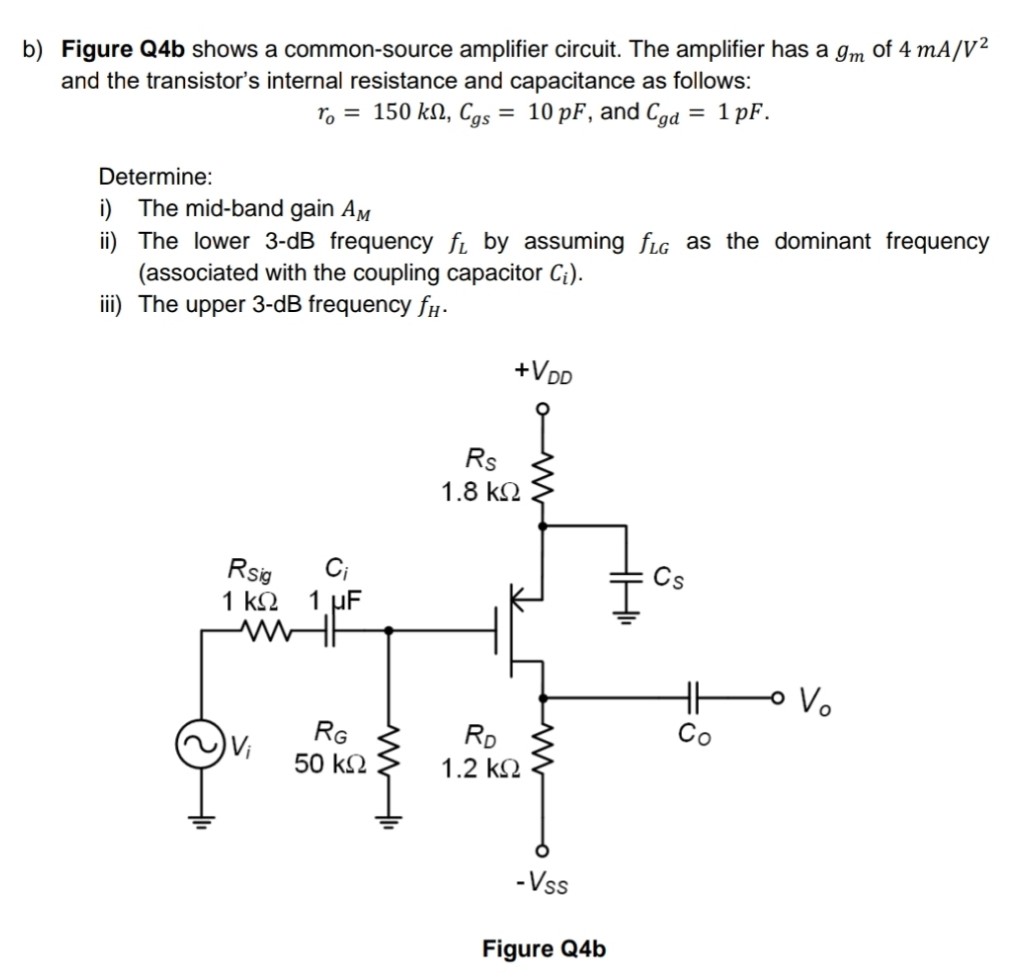b) Figure Q4 b shows a common-source amplifier circuit. The amplifier has a gm of 4 mA/V2 and the transistor's internal resistance and capacitance as follows: ro = 150 kΩ, Cgs = 10 pF, and Cgd = 1 pF. Determine: i) The mid-band gain AM ii) The lower 3-dB frequency fL by assuming fLG as the dominant frequency (associated with the coupling capacitor Ci ). iii) The upper 3-dB frequency fH. Figure Q4 b
